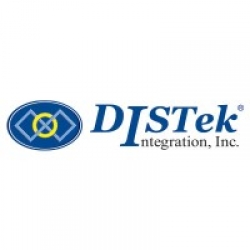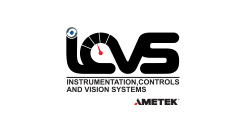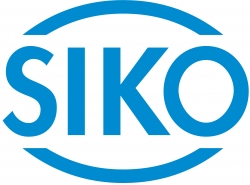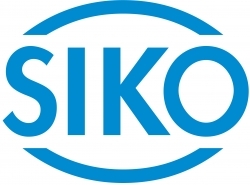Day 2: Thursday, August 22
Room A Morning | Autonomy and cab design
Moderator
 Dr YJ Lim
Dr YJ LimPrincipal product lead of robotics and autonomous systems
MathWorks
USA
11.30am
AEF’s TIM secure futureproof communication between tractor and implement
 Benjamin Jefferson
Benjamin JeffersonVP
DISTek Integration
USA
Tractor Implement Management (TIM) is a communication interface that enables the automation of functions between agricultural products, for example between towed implements and tractors. The AEF certifies TIM products via the AEF Conformance Test and provides digital certificates to ensure a secured and controlled connection between products from different manufacturers. There are a variety of functions that can be automated depending on the product. Only products that have AEF-certified matches of these functions will work together. TIM is based on ISObus TECU class III.
What the audience will learn
- A TIM tractor would make available one or more of the following services: ground speed, steering, electrohydraulic valves, hitch height
- Use case example: tractor and baler – all functions in the baling process on the field can be automated
- TIM uses a certified authentication process which ensures that the customer's implement and tractor are working together as requested
- The implement knows and controls its own processes, but with TIM the implement now can include the tractor processes
- TIM reduces operator fatigue. Automated processes replace manual operation. Once engaged the operator just monitors the process
11.50am
Software defined off-highway vehicle
 Ty Kim
Ty KimChief solutions architect
Kyungwoo Systech
USA
Software defined vehicle (SDV) is the most talked-about topic in the automotive industry as it goes through the paradigm shift of more and more vehicle features being driven by software, which then can be continuously improved over the lifetime of the vehicle. This trend is equally beneficial to off-highway vehicles but the adoption of critical technologies has been slow due to concerns about cost of development and lack of interest from major technology suppliers. In this session, we will talk about ideas to implement cost-effective, connected and intelligent systems for off-highway vehicles.
What the audience will learn
- Why software defined vehicle is the hottest topic in the automotive industry
- Whether the SDV trend makes sense for off-highway vehicle development
- Why the adoption of this critical trend is so slow in the off-highway vehicle industry
- Some ideas to overcome the obstacles
- How this would reshape the industry
12.10pm
Empowering fuse boxes: integrating intelligence with CAN controllers
 Erwin Baumann
Erwin Baumann�director of business development
MRS Electronic
Germany
Discover how to transform traditional ISO 280 fuse boxes into intelligent systems with advanced CAN controllers. We will explore case studies and real-life examples where even non-software engineers have built CANbus-enabled power distribution systems using a simple drag-and-drop configuration tool. Learn how to enhance diagnostic capabilities and system intelligence with CANbus communication, seamlessly upgrading your existing power distribution systems. Join us to understand the practical benefits of integrating CANbus communication into traditional fuse boxes, and how it offers superior diagnostic advantages for modern vehicle development.
What the audience will learn
- Learn how to convert traditional ISO 280 fuse boxes into intelligent systems using advanced CAN controllers for enhanced functionality
- Explore real-life examples and case studies where non-software engineers have successfully built CANbus-enabled power distribution systems
- Learn the practical benefits of integrating CANbus communication into traditional fuse boxes for superior diagnostics in modern vehicle development
- Understand how CANbus communication enhances diagnostic capabilities and system intelligence, seamlessly upgrading existing power distribution systems
- Discover how a simple drag-and-drop configuration tool can simplify building and managing CANbus-enabled power distribution systems.
12.30pm
Shaping a path to off-road autonomy
 Dr YJ Lim
Dr YJ LimPrincipal product lead of robotics and autonomous systems
MathWorks
USA
Recent technological advances facilitate heavy equipment autonomy, yet off-road vehicle autonomy proves complex due to rugged terrain and intricate tasks. Team collaboration, from perception to motion planning, is vital. Simulations mitigate high-cost, high-risk physical testing, refining algorithms and enhancing performance. This talk delves deeply into off-road autonomy, from construction sites to open-pit mines, highlighting integrated simulation workflows. It emphasizes risk reduction and innovation in design, testing and deployment, offering insights into how advancements can transform projects for more efficient and effective solutions in autonomous off-road vehicles.
What the audience will learn
- Create high-fidelity dynamic modeling and simulation
- Develop and validate autonomous algorithms for off-road vehicles
- Test off-road vehicles in photorealistic scenario simulations
- Deploy and certify functional safety design
12.50pm
Combining technologies to achieve industrial vehicle connectivity for non-road applications
 Heikki Keränen
Heikki KeränenHead of technology
Satel
Finland
The industrial process for off-highway vehicles benefits from reliable and seamless connectivity. The cellular, wi-fi, LEO satellite and narrowband UHF technologies all have their pros and cons. This presentation gives a performance and capability comparison of these technologies in the context of industrial off-highway vehicle use cases, supported by field experiences. It also shows how these technologies can be smartly combined.
What the audience will learn
- Introduction to main connectivity options for industrial non-road applications
- Pros and cons of main connectivity options
- How to smartly combine the connectivity technologies
- Some examples from the field
1.10pm - 2pm
Lunch
Room A Afternoon | Autonomy and cab design
Moderator
 Abi Ostipow
Abi OstipowSolutions specialist
dSPACE
USA
2pm
Flexible approach to camera-based driver assistance systems for mobile machinery
 Chuck Erml
Chuck ErmlManager, product management
AMETEK ICVS
USA
Ametek's goal is to protect lives, help people and reduce costs. Assistance systems play a central role in this by providing a better view of hazardous areas around commercial vehicles and mobile machinery. The challenge is that there are many types of commercial vehicles on the market with very different appearances. It is therefore of central importance to be able to provide systems tailored to the different use cases at the hardware and software/user interface levels.
What the audience will learn
- Challenges with AI in the commercial vehicle sector
- Flexible possibilities in the deployment of ADAS
- Smart camera/smart display/smart ECU
- Intelligent user interfaces
2.20pm
Centimeter GNSS/INS positioning and orientation in difficult off-highway environments
 Giri Baleri
Giri BaleriDirector of product management, OEM GNSS Division
Trimble
USA
Since the early 1990s, RTK GNSS positioning has provided a major boost in productivity to the mining, construction and agriculture industries. Tracking GNSS satellite signals in obstructed environments limits the ability to ensure uninterrupted availability and maximize benefits. In addition, high-precision GNSS users operating in equatorial and high-latitude regions are currently experiencing position degradation due to high solar activity related to the sun's 11-year cycle, which is expected to peak in 2025. This presentation provides an overview of the Trimble ProPoint positioning engine and its latest advances to mitigate many of these challenges. Real-world examples will be discussed.
2.40pm
Functional safety and ISO/ANSI standards
 Lutz Kettenhofen
Lutz KettenhofenCEO
SIKO Products
USA
 Mathias Roth
Mathias RothMobile automation business unit manager
Siko
Germany
Mobile machines already perform multiple complex functions and work processes. To ensure the safety of people and the environment, specific safety standards were created that define principles of design, safety requirements and methods to verify these. The presentation will show how the risk assessment according EN ISO 13849 defines the safety level and lays the foundation for the required safety sensors in an application. It will also show examples of how safety concepts were realized in different applications and environments. In addition, the situation in the US, based on the ANSI standard, will be evaluated.
What the audience will learn
- From risk assessment to safety level according EN ISO 13849
- Special requirements for safety sensors
- Situation in the US, based on the ANSI A92.2 standard for Mobile Elevating Work Platforms (MEWPs)
3pm - 3.15pm
Break
3.15pm
Achieving industrial autonomy through realistic testing
 Ajay Vemuru
Ajay VemuruDirector of business operations and strategy - Americas
Spirent Communications
USA
The realization of a future of autonomous industrial vehicles hinges on the development of robust PNT (position navigation timing) systems that can operate reliably in challenging environments. The expectation of reliable position and time information through GNSS, irrespective of the environment, becomes challenging in tunnels, canyons and environments with changing physical properties (such as open pit mines) due to signal obscuration, multipathing and man-made and natural RF interference. The development of such robust PNT systems can only be achieved if paired with reliable test and validation data to understand and optimize how the device will perform in the real world.
What the audience will learn
- The applications of PNT technologies in industrial vehicles
- The PNT threats facing industrial vehicles and the risks these carry
- Considerations and options for testing
- How to build a high-performance test environment
- The challenges of combining multiple PNT technologies
3.35pm
From the freeway to the field
 Abi Ostipow
Abi OstipowSolutions specialist
dSPACE
USA
In a world of ever-advancing technology, mobile machines now face new challenges and opportunities. In this presentation, we will explore the importance of hardware-in-the-loop (HIL) testing along with supporting ADAS/AD technologies and testing methods to help handle these challenges. It will touch on the experiences and insights from the automotive industry that can serve as valuable resources for the development of state-of-the-art mobile machinery in the field and on construction sites.
What the audience will learn
- Why HIL testing combats complex system validation
- What can be learned from the progress the automotive industry has made in developing safe autonomous vehicles
- Solutions to handle varying commercial vehicle test cases across different terrains
3.55pm
Seeing through the dust: phased-array radar applications in agriculture
 Rhett Schildroth
Rhett SchildrothChief technology officer
Mach
USA
Many of today’s most dirty and dangerous jobs, such as agriculture and construction, deal with a myriad of environmental factors that create a challenge for their labor force. Mach, an original equipment manufacturer, recognized this opportunity to bring a new product to market. This presentation will explore the fundamental differences between phased-array radar designs and conventional radar sensors, highlighting their advantages over camera vision and lidar. It will also discuss their potential applications in agriculture, emphasizing how phased-array radar technology can revolutionize various aspects of farming, including soil moisture monitoring and soil tillage work.
What the audience will learn
- Delve into the fundamental differences between phased array radar designs and traditional radar sensors
- Evaluate the performance of phased array radar sensors against stereo cameras and LIDAR
- Discuss specific off-road use cases that uniquely benefit from the superior resolution and penetration of X-band phased array radar
4.15pm
SafetyTouch: an evolutionary transformation in safe operation
 Dean Hotvet
Dean HotvetDirector of sales and marketing
Xymox, a RAFI Group company
USA
The integration of SafetyTouch represents an evolutionary milestone in machine operation. Until now, user interfaces have been limited in terms of safe input by conventional control mechanisms, often resulting in limited user experience. SafetyTouch, on the other hand, enables safety-related user input via intuitive touchscreen displays. The presentation deals with the challenges of realization and integration, and the benefits of using safe touchscreens. Replacing traditional control elements with touchscreen displays not only increases flexibility but also simplifies user interaction, resulting in higher productivity and efficiency and setting a new benchmark in the control of off-highway machinery.
What the audience will learn
- SafetyTouch and SafetyDisplay: what are they?
- How to realize safety-related inputs with touchscreens
- Simplifying user interfaces and workflows with SafetyTouch